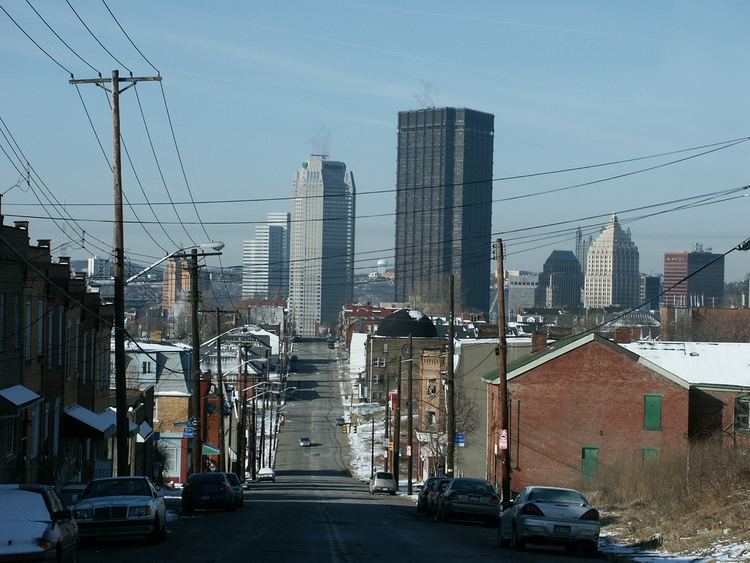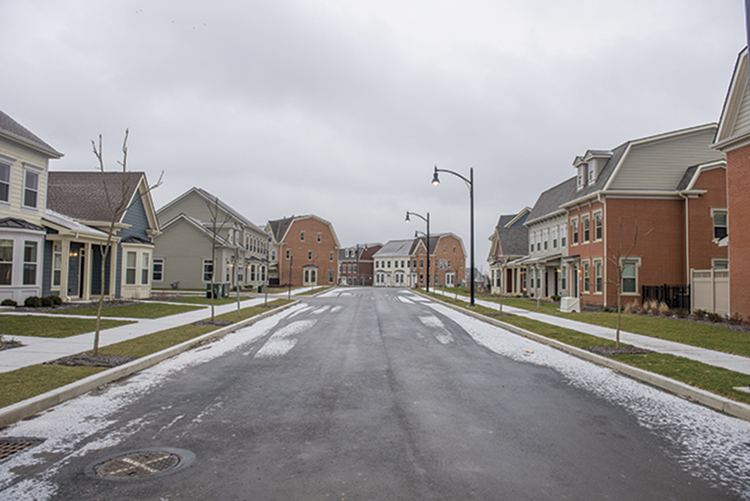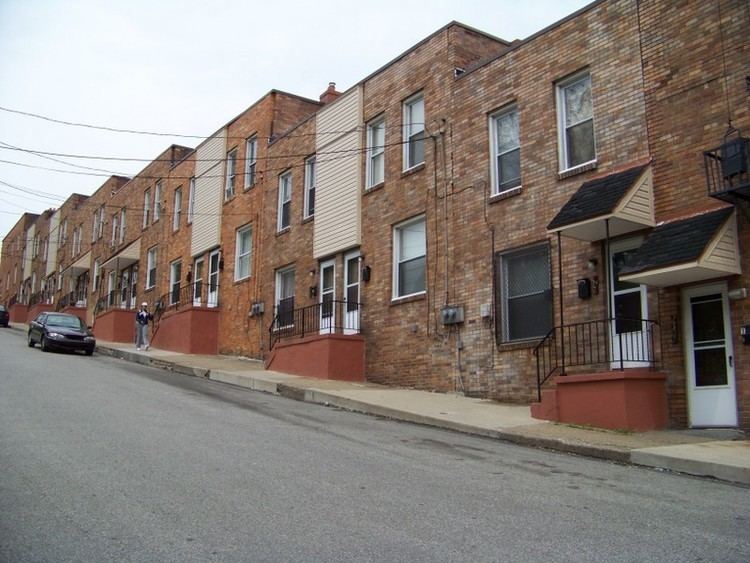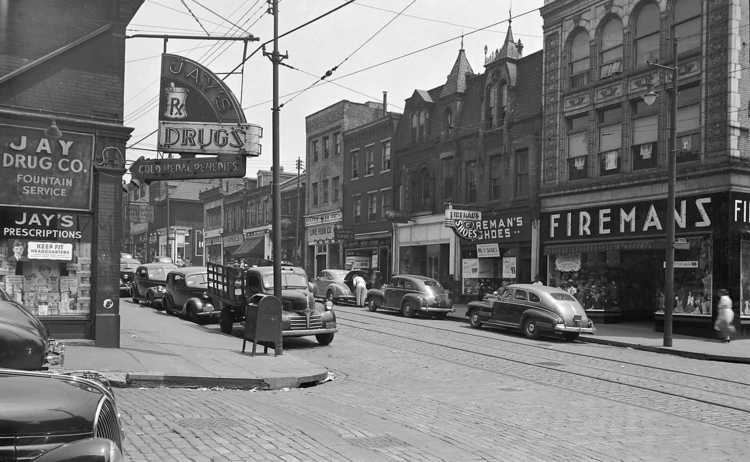Country United States County Allegheny County Area 46 ha | State Pennsylvania City Pittsburgh | |
 | ||
The Hill District is a historic African-American collection of neighborhoods in the City of Pittsburgh, Pennsylvania. Beginning in the years leading up to World War I "the Hill" was the cultural center of African-American life in the city and a major center of jazz. Despite its cultural and economic vibrancy, in the mid-1950s a substantial area was slated for redevelopment, displacing about 8000 individuals and leading to the neighborhood's dramatic economic decline.
Contents

Geographic area

The Hill District of Pittsburgh, Pennsylvania as of 2010 the area comprises Census Tracts 305 (Crawford Roberts, "Lower Hill"), 501 (Crawford-Roberts, "Middle Hill), 506 (Upper Hill), 509 (Bedford Dwellings), 510 and 511 (Terrace Village). It is bordered by the Downtown on the west, the Strip District next to the Allegheny River and Polish Hill to the north, the Bluff (Uptown) on the southwest, and Oakland on the east and southeast.
The census tract/neighborhoods noted in the Hill District are represented on the Pittsburgh City Council by the council member for District 6 (Downtown neighborhoods). Part of the Upper Hill is also represented under District 7. The 15219 ZIP code covers all five neighborhoods, and the 15213 ZIP code covers part of Terrace Village and the Upper Hill.
History

Following the rebellion by slaves and gaining of independence of Haiti in 1804, the free African-American community of the Hill District, Pittsburgh's oldest black community, was called "Little Haiti." The early residents of the Hill District were middle-class free blacks. In 2004 the Pittsburgh City Council announced commemoration of the 200th anniversary of Haiti's independence.
Beginning in the 1910s, the Hill attracted migrants from elsewhere in the United States (particularly from the rural American South in the Great Migration) and from abroad, creating a vibrant and diverse social landscape. Jazz musicians thrived here and the neighborhood was considered "the crossroads of the world." That phrase, attributed to Harlem Renaissance poet Claude McKay, was popularized by radio DJ Mary Dee (Mary Dee Dudley), of WHOD Radio, Pittsburgh's only black radio station.
Economic decline
The district had cultural vibrancy, and numerous successful entertainment venues and black-owned businesses, but much of the housing was aged and substandard. Following World War II, the federal government committed to upgrade housing across the nation, and in Pittsburgh, 95 acres of the Hill District were selected for redevelopment. In an article from 1943, George E. Evans, a member of the City Council, reasoned that public-private redevelopment could provide significant employment to returning war veterans, while ameliorating what he saw as an area beset by deterioration and urban blight. He wrote,
"The Hill District of Pittsburgh is probably one of the most outstanding examples in Pittsburgh of neighborhood deterioration... There are 7,000 separate property owners; more than 10,000 dwelling units and in all more than 10,000 buildings. Approximately 90 per cent of the buildings in the area are sub-standard and have long outlived their usefulness, and so there would be no social loss if they were all destroyed."
Much of older housing in cities still lacked indoor plumbing and other amenities considered basic; planners did not fully take into account the effects of the disruption of residents and social networks by wholesale redevelopment of urban areas.
Evans represented the majority view of Pittsburgh politicians, including state representative Homer S. Brown. Born in West Virginia, Brown was the third African American to graduate from the University of Pittsburgh law school and was active in civic affairs. He established a law practice, became president of the local NAACP chapter, and served in the state legislature, supported by both black and white voters for eight consecutive terms. In the 1940s, working with David Lawrence, Richard King Mellon, and other business leaders, Brown drafted legislation that opened the way to "urban renewal" in the Hill District. During the next decade, he authorized the relocation of 1,500 black families to make way for the Civic Arena. He was elected as Allegheny County's first African-American judge, sitting in Pittsburgh.
In the summer of 1956, some 1,300 structures were razed, displacing about 1,500 families (more than 8000 residents), the great majority of whom were black. This cleared the way for the construction of the Civic Arena and adjacent parking, to support downtown events and attract major entertainment. But, the redevelopment severed the Hill District from surrounding neighborhoods, resulting in its dramatic economic decline. This structural problem was exacerbated by the decline of Pittsburgh's population more generally, as jobs disappeared due to industrial restructuring, and numerous middle-class residents moved out to newer suburban housing. Between 1950 and 1990, the Hill lost 71% of its residents (more than 38,000 individuals) and about 400 businesses, leaving the neighborhood hollowed out.
Many people displaced from the Hill moved into the East Liberty and Homewood-Brushton neighborhoods. In a ripple effect, middle-class families (both white and black) left these areas and moved to newer suburban housing.
The Hill District today
Since the late 20th century, the city and public interest groups have worked to renew the area. Because of the loss of jobs and businesses, many residents suffer from poverty. The District has struggled for decades with varying levels of dilapidation and crime. About 40 percent of the Hill District's residents live below poverty level. The vast majority of residents in the 21st century are black or African American; about 6 percent of the population is white. For 30 years the residents did not have a supermarket and also lacked a pharmacy for many years.
A project to open a new grocery store on the Hill came to fruition in late 2013. Centre Heldman Plaza, wholly owned by the Hill House Economic Development Corporation, is a grocery store anchored retail center with fast-casual food and businesses services. The YMCA opened a $9 million branch in the neighborhood, complete with a rooftop garden. A group of investors has organized to restore the New Granada Theater, a historic jazz club where Ella Fitzgerald and Duke Ellington once performed. A new dropout recovery high school, the Hill House Passport Academy Charter School, opened in 2014 and by 2016 had graduated 132 students https://newpittsburghcourieronline.com/2014/10/24/hill-house-celebrates-charter-school/; The local Duquesne University opened a new pharmacy in the neighborhood in December 2010, the first university-operated community pharmacy in the US.
In art and popular culture
The Hill District was the setting for nine of the 10 plays in August Wilson's Pittsburgh Cycle.
The TV series Hill Street Blues was named for the district. Steven Bochco, a writer for the show, attended college at the nearby Carnegie Institute of Technology (now Carnegie Mellon University) and based the show on the neighborhood.
